

Fairphone 5
256 GB, Transparent Edition, 6.46", SIM + eSIM, 5G
The White House’s decision has been made: American companies can no longer work with Huawei. That means Huawei can’t use Google services anymore, with immediate effect.
This means Huawei will immediately lose access to Google Services and privileged access to early builds of the Android operating system. Existing devices such as the Huawei P30 Pro won’t be affected. However, this may impact on future devices. But as the situation is still unfolding, it’s all a bit up in the air.
On Friday, it still wasn’t clear how much Huawei would be affected by the sanctions, as the US Commerce Department wanted to check if current networks and network equipment could be impacted. In fact, the extent to which Huawei would be affected was still unclear up until last Sunday.
Google confirms the sanctions in a tweet from the official Android account.
This probably affects Honor devices as well given that the brand is a Huawei subsidiary.
Huawei confirmed this in an e-mail on the morning of 20 May 2019:
Huawei has made substantial contributions to the development and growth of Android around the world. As one of Android’s key global partners, we have worked closely with their open-source platform to develop an ecosystem that has benefitted both users and the industry.
Huawei will continue to provide security updates and after-sales services to all existing Huawei and Honor smartphone and tablet products.
This covers those that have been sold and that are still in stock globally. We will continue to build a safe and sustainable software ecosystem, in order to provide the best experience for all users globally.
And so it could be the case that Huawei has to carry on without Google’s direct support. But neither the US administration, nor China, nor Google can stop Huawei working with Android. That’s because Android is inherently an open operating system. Anyone can customise it, even you.
But this hits Google Play services hard – in other words the whole app store and its integrations and APIs. They probably won’t feature any more on Huawei phones, apart from on existing ones. But if you buy the phone, you can always add Google services yourself.
This basic version is called Android Open Source Project (AOSP).
If Huawei wants to keep working with Android and if the trade laws stay the same as those outlined on 20 May 2019, then Huawei will have to build using AOSP. In practical terms, that means in the context of the existing Emui version:
According to Google, existing devices won’t be affected by these measures.
Given that a collaboration between Huawei and Google is only constricted by the fact Google is based in the US and Huawei is headquartered in China, Huawei could still launch a subsidiary in the US. This legal entity, theoretically «Huawei US», would then handle developer contracts with Google. In which case, in the eyes of the law, everything would be carried out on US soil.
On paper at least, this would go hand in hand with Donald Trump’s plans to create new positions in the US job market.
The backdrop of the trade war between the US and China draws parallels with the ZTE case. The Chinese smartphone maker was blacklisted in April 2018 and was forbidden from working with US companies. A month later, the company stopped trading. That was until July, when the ZTE name was removed from the blacklist.
According to the South China Morning Post, ZTE recorded losses of 1.1 billion US dollars in the first half of 2018. Meanwhile, in the first half of 2019, it expects profits in the region of 260 million US dollars.
The sanctions against Huawei are born out of the long-running trade war, which the US is leading against China under president Donald Trump. Experts aren’t agreed on how sensible, sustainable or damaging this war is. The Trump administration already has experience in sabre-rattling when it comes to China, and in fact, even as recently as three years ago.
During his campaign for presidency, Donald Trump announces at an appearance in Pennsylvania that he has plans to take action against unfair Chinese trade practices. He announces tariffs, which are later imposed on the Chinese.
Trump labels the Chinese practices the «biggest job theft in history».
Trump, who has since become president of the United States, signs two executive orders, which are designed to levy more customs duty on Chinese firms. Subsidised trade and anti-dumping trade are particularly affected.
The second executive order demands an enquiry into the US trade deficit.
In a meeting at Trump’s Mar-a-Lago resort in Florida, the US president and Chinese president Xi Jinping agree to a 100-day phase of talks on trade between the two countries.
The talks fail.
The aim was for both nations to find a way to reduce American debts to the Chinese and reduce new debts.
Trump announces in an interview with news agency Reuters that he is imposing a fine on China. This comes off the back of allegations of stealing intellectual property. However, Trump can’t give any proof, details or concrete evidence in the interview.
«It’s not only China. China’s just the biggest. It’s everybody,» Trump says in the interview.
The Trump administration imposes tariffs on imported washing machines and solar panels. This doesn’t just affect washing machines and solar panels from China but all imported washing machines and solar panels.
The Trump administration introduces more tariffs. Imported steel is hit with a 25% tariff and aluminium with 10%. As with washing machines and solar panels, these tariffs on imported steel and aluminium apply to imports from all countries, not just those from China.
China imposes tariffs of up to 25% on 128 American products.
The USA introduces tariffs of 25% on goods valued over 50 billion US dollars.
China introduces tariffs on US goods valued over 50 billion US dollars.
The Chinese telecoms company ZTE is put on the same blacklist that Huawei has just found itself on. The South China Morning Post reports this is because ZTE admitted to selling technology to Iran. And according to the US, this constitutes an offence to trade under Section 301.
The South China Morning Post announces that Huawei has been working on a mobile operating system for six years and that it could replace Android should it be necessary.
Bloomberg reports that ZTE, a company with 80,000 employees, has ceased trading. All outstanding orders are being settled but then what happens after that, no one knows.
The US sets an implementation date for the customs regulation. From 6 July, 25% tariff increases will apply on goods valued at 34 billion US dollars. Customs duty will also apply on heavy goods valued at 16 billion dollars.
In turn, China introduces tariffs on goods from the US valued at 34 billion US dollars.
The US announces plans to levy customs duty of 10% on Chinese goods valued at 200 billion dollars.
The Verge reports that ZTE has been removed from the blacklist.
Donald Trump instructs the 10% tariff on Chinese goods valued at 200 billion dollars that was announced on 10 July be increased to 25%.
A pattern is emerging. The US publishes a list of Chinese products valued at 16 billion US dollars that have a 25% tariff slapped on them.
China levies tariffs on US products that are valued at 16 billion US dollars.
Tariff regulations that are outlined in the lists from 7 August come into force.
President Trump threatens to introduce further tariffs on goods valued over 267 billion US dollars.
The US agrees on a 10% tariff on Chinese goods valued at 200 billion US dollars. The government announces the tariffs will increase to 25% on 1 January 2019.
China retaliates with tariffs on goods valued at 60 billion US dollars.
The US and China agree to a 90-day trade tariff ceasefire. Trump then agrees not to increase the tariffs that he implemented on 1 January before March 2019. Up until then, China and the US want to hold talks. At which point China agrees to buy «a significant amount» of goods from the US.
Trump decides not to increase the tariffs on 1 March 2019. But the threat to increase them remains even though no implementation date is given.
Trump announces that the customs duty on goods valued at 200 billion US dollars will increase from 10% to 25% on 10 May 2019.
The Trump administration officially announces that customs duty on goods valued at 200 billion US dollars is increasing from 10% to 25% on 10 May 2019. Reuters reports that China no longer considers most of the assurances that emerged from talks with the US as binding.
Trump’s government blacklists Huawei. The Chinese company isn’t allowed to trade with US companies with immediate effect.
The US Commerce Department checks to see if the latest sanctions against Huawei would disrupt existing networks or infrastructure.
Google can no longer work with Huawei. The latter still has the option to use the free version of Android AOSP and build other Android versions with its own user interface, Emui, as well as other proprietary features.
Journalist. Author. Hacker. A storyteller searching for boundaries, secrets and taboos – putting the world to paper. Not because I can but because I can’t not.
From the latest iPhone to the return of 80s fashion. The editorial team will help you make sense of it all.
Show allThe trade war between the US and China, and between Donald Trump and Huawei has reached a new level. The Chinese company has been blacklisted in the US since last Thursday. And US firms now aren’t allowed to trade with Huawei with immediate effect.
The news portal Bloomberg reported that chip manufacturers, such as Intel, Qualcomm, Xilinx and Broadcom would cease their contracts with Huawei. But the portal didn’t cite their direct sources. Huawei probably has the best bargaining position here as its mobile technology runs on Kirin systems-on-a-chip (SoC), which is at the heart of every tablet and smartphone. The Kirin SoC is developed by Huawei in-house and only relies on chip manufacturers as suppliers for individual parts.
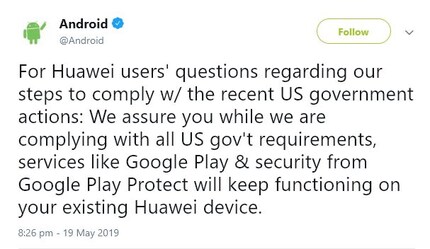
For Huawei users' questions regarding our steps to comply w/ the recent US government actions: We assure you while we are complying with all US gov't requirements, services like Google Play & security from Google Play Protect will keep functioning on your existing Huawei device.
At first glance, the sanctions against Huawei sound scarily serious. But they don’t have to be. On 20 May 2019, the world was confronted with a situation that was still unfolding. As the results of the conflict show, what’s said and what is publicly concluded is often just sabre-rattling. Deadlines and measures are used as a scare tactic and not as something that’s meant to have real consequences. Each side knows that and so can exert pressure or speculate and wait to see if the other will deliver on the threat.
Although Huawei’s logo is prominent in the PowerPoint presentation at Google’s yearly developer conference, Google I/O, Google isn’t allowed to deliver any more technology to Huawei. That’s not to say Huawei has to stop working with Android. On the contrary, Android is an open platform that anyone can use and alter. In other words, all developers have access to the basic version of Android, even if they can’t get their hands on Google pre-releases or collaborate with Google on designing new features.
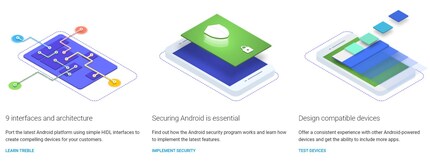
Huawei confronts the American administration as the third player in the trade war. The South China Morning Post published an article on 27 April 2018 where Huawei announced it has been working on its own mobile operating system for the last six years. But how this operating system works, what it looks like or what it’s even called is still unclear as of 20 May 2019.
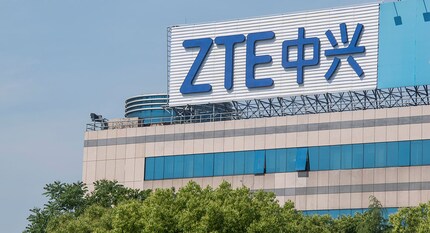
While the company was out of business, ZTE was only settling outstanding bills and contracts, which resulted in massive losses. But four months later, it’s back up and running and working on 5G technology. The company also has a new lobbyist in Washington in the form of senator Joe Liebermann.
The ZTE case is an example of how the Huawei story could pan out, but it doesn’t necessarily have to follow this path. What’s more, Huawei is a much bigger company than ZTE. The last financial year without US intervention for the two brands was 2017. And at that time, Reuters reported ZTE had recorded profits of 723.52 million US dollars, while the China Daily announced Huawei had generated 7.55 billion US dollars.
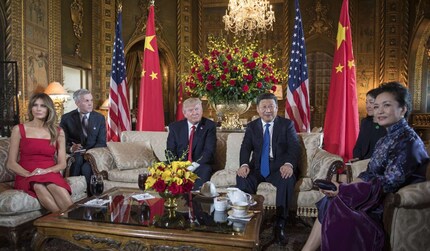
As part of the USA’s first offensive against China, Trump orders an enquiry under Section 301 of the US Trade Act. Section 301 allows the President of the United States to take all appropriate action to sever trading relations that break international trade agreements or are unjustifiable, unreasonable, discriminatory or put a strain on or damage US trade.
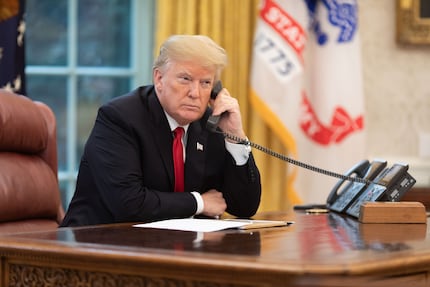
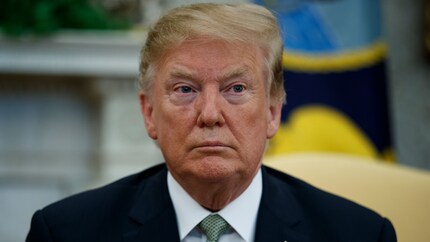


Fairphone 5
256 GB, Transparent Edition, 6.46", SIM + eSIM, 5G